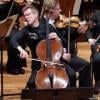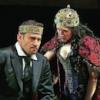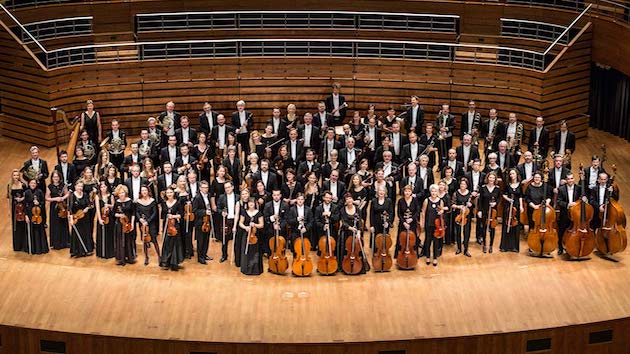
The answer is clear after Stanford Live’s NFM Wrocław Philharmonic concert at Bing Concert Hall on Friday, January 31. To hear modern Polish orchestral music at the top of performing quality, it’s best to import a top Polish orchestra to play it.
The initials NFM stand for the National Forum of Music, the orchestra’s recently-built home venue, reportedly an excellent hall. The musicians should have felt at home in Bing, another high-quality hall whose vivid acoustics give an orchestra clarity and verve that any ensemble should welcome.
The conductor was the orchestra’s music director, Giancarlo Guerrero. Reared in Nicaragua and Costa Rica, Guerrero is quite the international traveler, being also music director of the Nashville Symphony. He conducts boldly, flinging his arms and even his entire torso around when the music invites it. He also has the loudest and clearest carnival bark to announce encores of any conductor I know.
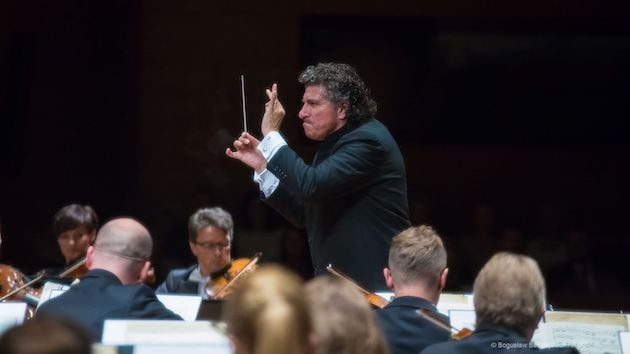
The Polish composers on the program were Karol Szymanowski (1882–1937) and Witold Lutosławski (1913–1994), both major names in the field. Lutosławski in particular is a favorite in Wrocław: the orchestra used to be named in his honor, and it has recorded his complete works. They were joined by the great German, Johannes Brahms (1833–1897), who, though one might not expect it, has a connection to Wrocław. In his day, it was a German city called Breslau. In 1880, the university there offered Brahms an honorary degree. After some nudging, the unpersonable composer was persuaded to write a celebratory work for the occasion, the Academic Festival Overture.
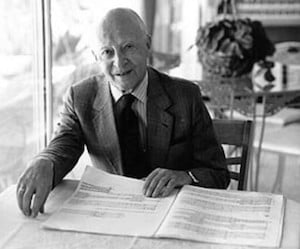
That wasn’t the Brahms work played on Friday. Instead, we heard a tense and dramatic performance of his Symphony No. 1, Op. 68. The horns resounded and the timpani thundered. The clarity of the hall and the playing made this more of a separated than a blended version of Brahms, yet it was well-balanced. It didn’t feel like the bones under the music were showing to hear clearly the variably shimmering and pizzicato strings underneath the bold brass theme in the dark and expectant introduction of the finale. The huge, unified sound of the wind choir actually overpowered the strings in the third movement.
This work concluded the program, and was followed by vigorous encores of Antonín Dvořák’s Slavonic Dance, Op. 46 No. 8, and Johann Strauss II’s Thunder and Lightning Polka. Except for giving a few cues, Guerrero didn’t conduct these at all. As I’ve seen Valery Gergiev do with encores, he just stood back and listened to his excellent musicians go at it.
However excellent the second half, the first half was even more so, and enlightening as well, for one who had heard these Polish compositions before and found them challenging.
Lutosławski was represented by his Symphonic Variations, a short student composition from 1938. The clarity of presentation extended to a distinct separation between a particularly folklike presentation of the opening theme and the modernistic variations, which run from a Stravinskian base to premonitions of Lutosławski’s own mature work of the 1940s and 50s, with hints in this performance of a chuckle or two in the manner of Carl Stalling.
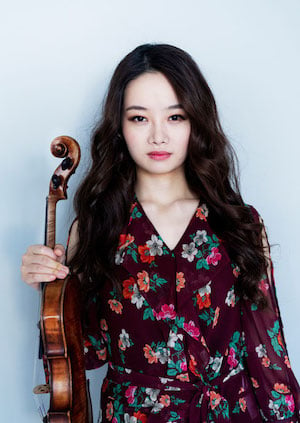
For Szymanowski’s Violin Concerto No. 1, Op. 35, the soloist was Bomsori Kim. This Korean violinist brought an eager, fresh-feeling air to the concerto. Her tone was mostly light, especially at the beginning, where a chirping, bird-like quality was almost reminiscent of Vaughan Williams’s The Lark Ascending. Gradually she gave more emphasis to a fuller, deeper middle tone. In the cadenza, she displayed an even greater variety of tones, with full emphasis on the glissandos and double stops. She placed less emphasis on the harmonics that play a key role in the concerto’s concluding passages.
The orchestra equally evolved over the concerto. It began full of light, chittering, jangly sounds brought out by a percussion battery, a piano, and a celesta. Gradually its quality became fuller and more expressionist. Guerrero carefully controlled the frequent surges in the sound. Szymanowski often had the soloist begin a quiet passage inaudibly underneath one of these, emerging as it were from behind the orchestra when its surge quickly receded. The players’ receptive performance of tricks and quirks like this made for an attractive presentation of an intriguing concerto.


